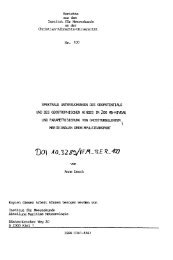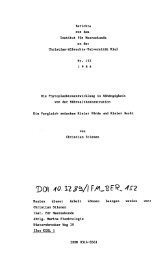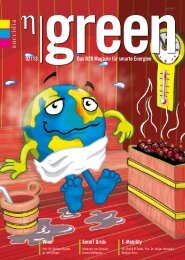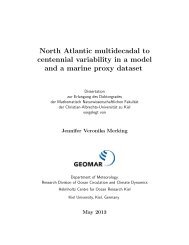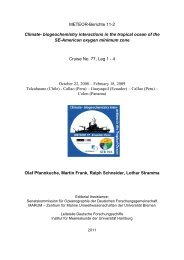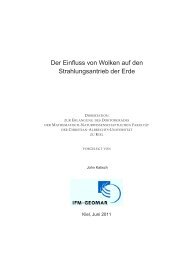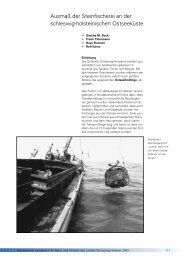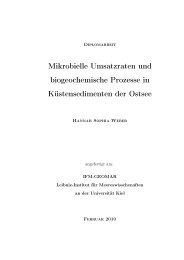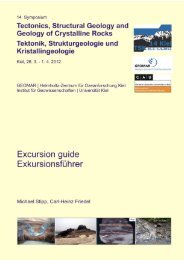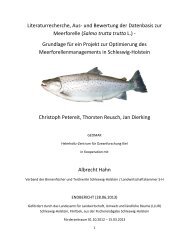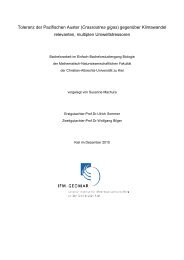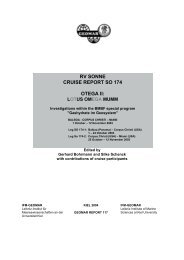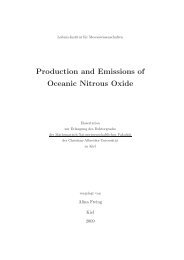Download (3148Kb) - OceanRep
Download (3148Kb) - OceanRep
Download (3148Kb) - OceanRep
Erfolgreiche ePaper selbst erstellen
Machen Sie aus Ihren PDF Publikationen ein blätterbares Flipbook mit unserer einzigartigen Google optimierten e-Paper Software.
With the present thesis a method for the analysis of zooplankton field<br />
samples by means of quantitative automated image analysis is<br />
introduced. The procedure served for the investigation of net samples<br />
collected during the "Meteor - Equator - Expedition 1979".<br />
The image analysis method has been developed for the "Quantimet 720"<br />
system produced by "Cambridge Instruments". A detailed description of<br />
the system's structure and its mode of operation is given. For the<br />
investigation of the zooplankton samples the system was equipped with<br />
a "Tessovar" microscope by Zeiss that enabled measurements by a 2-fold<br />
and a 3.2-fold magnification. Using this system a quick, precise and<br />
objective measurement of planktonic organisms is possible. Only copepods<br />
and their developmental stages were investigated. The geometrical<br />
parameters, length and area, were used for the measurements. Assuming<br />
that the ideal shape of a copepod equals an ellipsoid, the individual<br />
volume was calculated. The processing of the automatically stored raw<br />
data was carried out with specially developed computer programs. With<br />
these programs a statistical analysis and the presentation of results<br />
in the form of size - frequency - distributions are possible.<br />
The potential measurement speed of the image analysis system was<br />
reduced to eliminate errors caused by artefacts arising from the<br />
adhering or overlapping of single organisms. Furthermore a counting<br />
chamber was designed to allow the repositioning of the organisms<br />
during measurement. The operator also has the possibility to append<br />
additional information in the form of indices to the measured data.<br />
The copepods have been differentiated into 4 fuctional groups:<br />
floaters, swimmers, wrigglers and nauplii. A clear visual distinction<br />
between these groups is easily made via the monitor and so a quick<br />
index assignment is possible.<br />
The described system works more slowly than the coulter - counter -<br />
method but exceeds the traditional microscopic analysis in speed. Its<br />
information content surpasses that of the coulter - counter - method<br />
and is comparable with information gained by traditional microscopic



